Which wave path is fastest?
Snells's Law describes the relationship between the angle of incidence of a seismic wave passing through a boundary between two different media. In this model of increasing velocity with depth, the critically refracted seismic rays speed up with depth. Velocity boundaries redirect the seismic waves until they reach a critical angle and return to the surface.
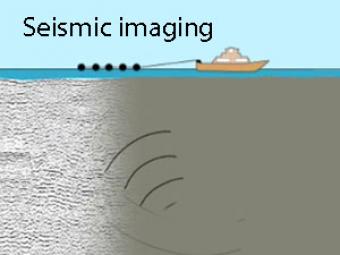
Man-made sound waves produced by airguns travel through the earth, reflect off different rock layers, then are recorded by geophones being towed behind the boat.

Seismic waves travel a curving path through the earth due to changes in composition, pressure, and temperature within the layers of the Earth.
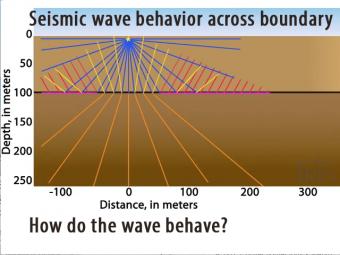
Seismic waves travel at different speeds through different materials. In this 2-layer model two wave fronts leave an impact at the same time but the lower layer is faster.

Seismic waves travel a curving path through the earth due to changes in composition, pressure, and temperature within the layers of the Earth.
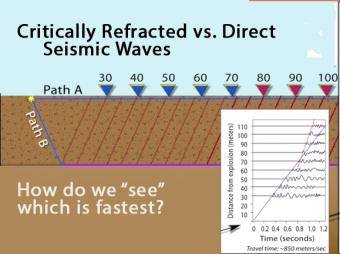
Animation shows the race between the direct seismic wave vs. the deeper, longer-path critically refracted seismic wave. Graph records the arrival times.

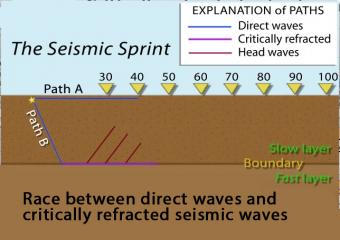
In this model of increasing velocity with depth, the critically refracted seismic rays speed up with depth as they pass 5 different velocity boundaries.

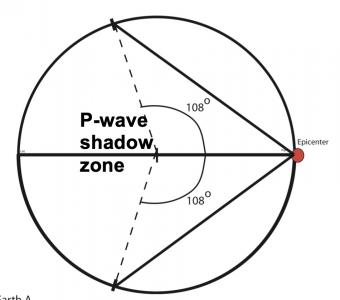
Learning occurs as students work first in small groups and then as a whole class to compare predicted seismic wave travel times, generated by students from a scaled Earth model, to observed seismic data from a recent earthquakes. This activity uses models, real data and emphasizes the process of science.

Like other waves, seismic waves obey the laws of physics. In this activity Physics students have the opportunity to apply their understanding of the basic concepts of waves (e.g. reflection, refraction and transmission of energy) as they examine seismic data to determine how far it is from the surface to the bedrock.
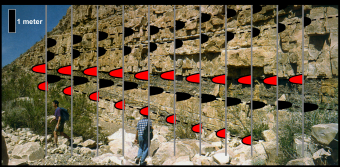
Seismic reflection provides information about the subsurface stratigraphy and allows geoscientists to makes inferences regarding the geologic structure. This lesson introduces the concepts of frequency, period, and wavelength, and their relationships to velocity and density structure. An introduction to waveform polarity is included, along with the standard Society of Exploration Geophysicists (SEG) convention.